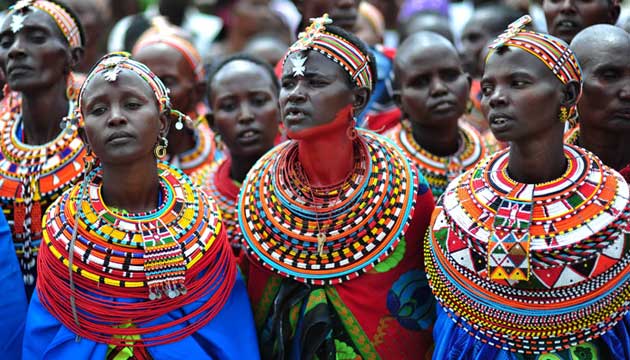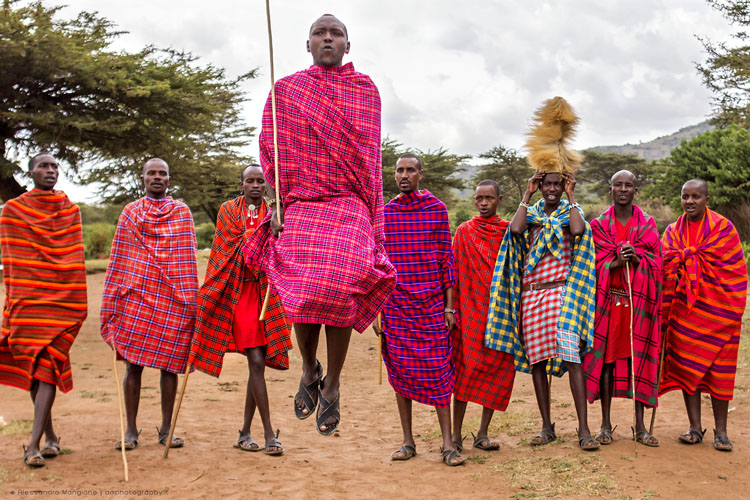
Maasai Tribe
Maasai Tribe
Maasai tribe is one of the iconic indigenous locals that have unique traditional cultures and norms across Africa. The Maasai people belong to the Nilotic ethnic group speaking the Maa language. The locals are distrusted mostly in the Southern part of Kenya and the Northern part of Tanzania. The leave around the tourist destinations around the national parks and reserves in Kenya and Tanzania. They are very unique in that they are the only group of people who have managed to leave together with wildlife with little complain or effects on either side.
The Maasai Tribe are the most renown across the world when talking about Africa. They are the only cultural group in which modernization has failed to change though they leave in towns and cities. The Maasai tribe can be related to the Nilo-Saharan family that includes Dinka, Nuer, and Kalenjin who speak the same or related language like Maa. The majority of the Maasai population is found in Kenya with an estimated number of 841,622 according to the population census of 2009 and Tanzania with 800,000 according to the 2011 population census of Tanzania.
The population of the Maasai tribe has been increasing in number, most of them now are educated. They have adopted a mixed language of English and Swahili as they are the official languages of Kenya and Tanzania. Currently, the Maasai people are occupying an estimated total area of 160,000 square kilometers. They occupy the great rift Valley region which is covered by the Semi-arid vegetation. They are semi-nomadic pastoralists that rare and depend on cattle for a living. They always do small migration with their cattle during the dry season as they look for pasture and water for their animals.
The Maasai tribe has a great strong belief in their god called Enkai which they say gave them all the cattle. It is out of this myth that they believe they do not rustle cattle but they are taking back what belongs to them. It is their duty to protect and keep cattle safely on the planet earth, they depend mostly on their cattle for their livelihood. They enjoy fresh blood and milk which they extract from the cattle.
History of the Maasai/Origin of the Maasai tribe
Following the oral history of the Maasai tribe, they believed to have originated from the lower Nile Valley in the Northwest part of Kenya around Lake Turkana. They moved down to the Southern part, they first rested at the central part of the Kenya mainland before they proceeded to the Southern part of Kenya and some crossed to Settle in the Northern part of Tanzania. By the 19th century, the tribe had dominated almost all the Great Rift Valley regions across Kenya and Tanzania adjacent to the land of Dodoma and Mount Marsabit. Currently, there are 16 communities of the Maasai tribe in Kenya which include Iloitai, Ilpurko, Kore, Ildamat, Ilmatatapato, Isiria, Ilkankere, Iloitokitoki, Ilkeekonyokie, Ilkisonko, Parakuyu, Ilarusa, Iloodokilani, Ilwuasinkishu, and Iloitokitoki.
The Maasai tribe is one of the tribes in Africa which has the best historical strength that stood and fought against slavery. They resisted slavery and remain on the and with their animals. The Maasai tribe occupies the best unique tourism sites in East Africa covering the most scenic and worldwide recognized national parks and reserves.
Maasai tribe Shelter or Housing
The Maasai tribe has unique settlement patterns that leave in circular fashions in an extended family. All parents and other relatives left in the same area where they gazette at their homes with all local materials like thorns and others. This kind of settlement is a defensive mechanism to guard them against the wildlife since they mostly leave near or inside protected areas. They practice more of a division of labor while at home, mostly the women do most of the homework like the construction of the houses, milking of the cows and others while the men do the warrior parts. The men also provide security to the family and fencing of the family, they use local materials which are mostly thorns.
The Maasai tribe people leave in small roundhouses that are small and built using local materials. The houses are built by women using sticks, cow dung, mud and thatched with grass. The houses are called Inkajijik in the Maasai language.

Maasai tribe Culture
The Maasai tribe is one of the tribes with firm patriarchal in nature, the elders especially men determine more the daily activities at home. They advise the young next generation dividing the duties at home while the young men go for warrior meetings. The tribe of the Maasai has a traditional belief in their small god which is called Engai or Enkai. The Maasai tribe stick on their traditional way of life. They do not have formal burial ceremonies but the dead are left at the field for birds or animals to eat. The team may swift away from that point and move to the next nearby place where they will resettle, they only burry great chiefs.
With lifestyle, the Maasai tribe has the most unique lifestyle not only in Kenya but in entire Africa. They put on the red-colored Maasai dress that is used at day time as cloth and at night it turned as a bedsheet. Dressing code depends on the age of the person from black for the young ones to red or blue for the elder people. All their lives depend on the cattle and one is respected according to the number of cattle you have. Their cattle provide the primary food and some small cereals they grow on small scale. They have adopted some small beekeeping and tourism for culture. They believe that God entrusted them with all cattle on earth and that is why they take cattle rustling from other tribes as collecting back what God gave them.
Maasai tribe remains the most unique indigenous tribes in the world, their unique cultures are unchangeable irrespective of the modernization of the world. You will have the most complete safari in Kenya should be complemented by a cultural visit to the Maasai tribe.


